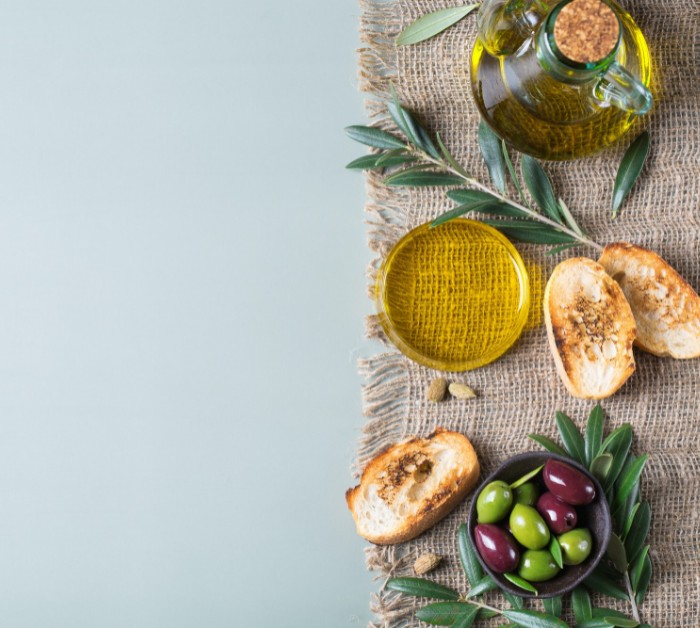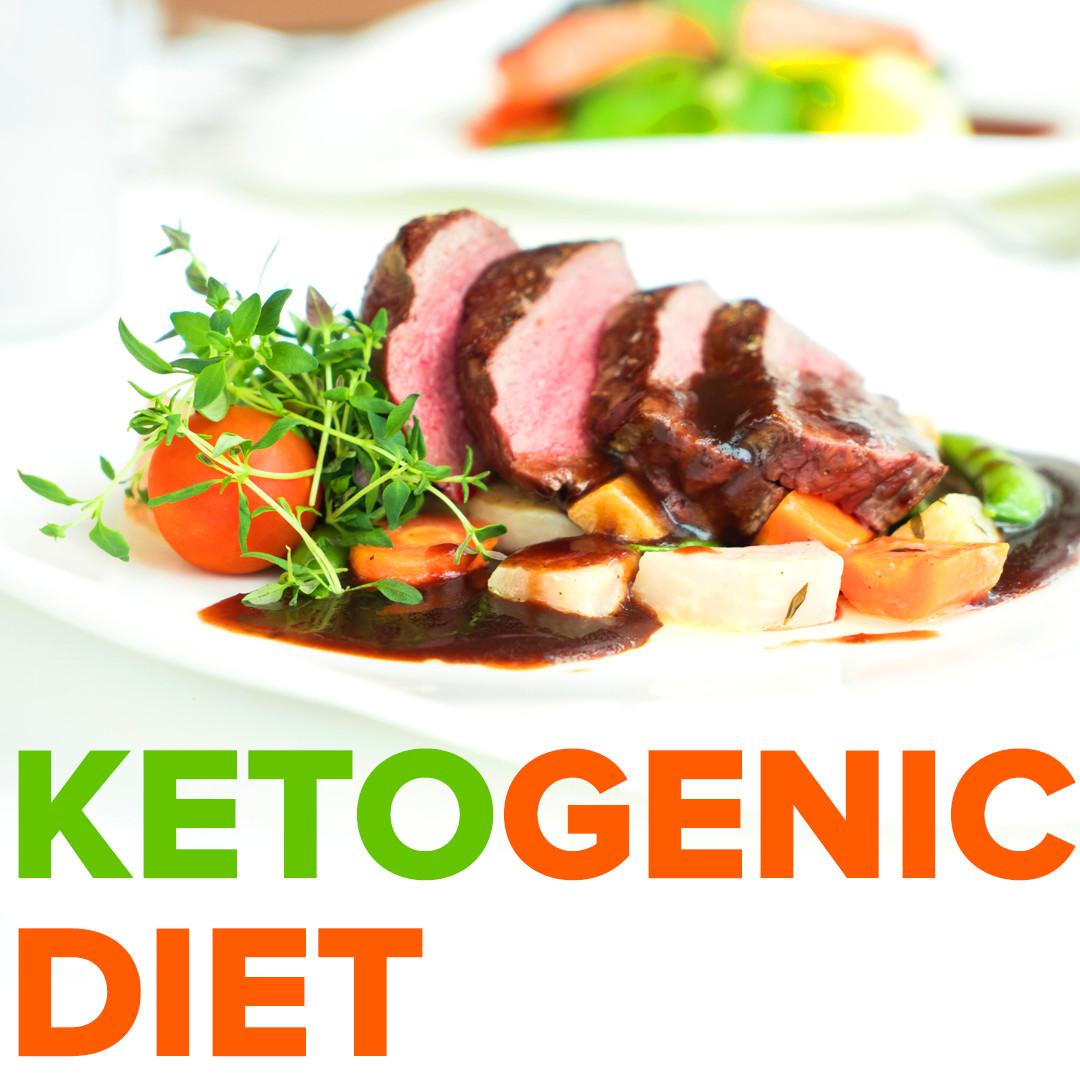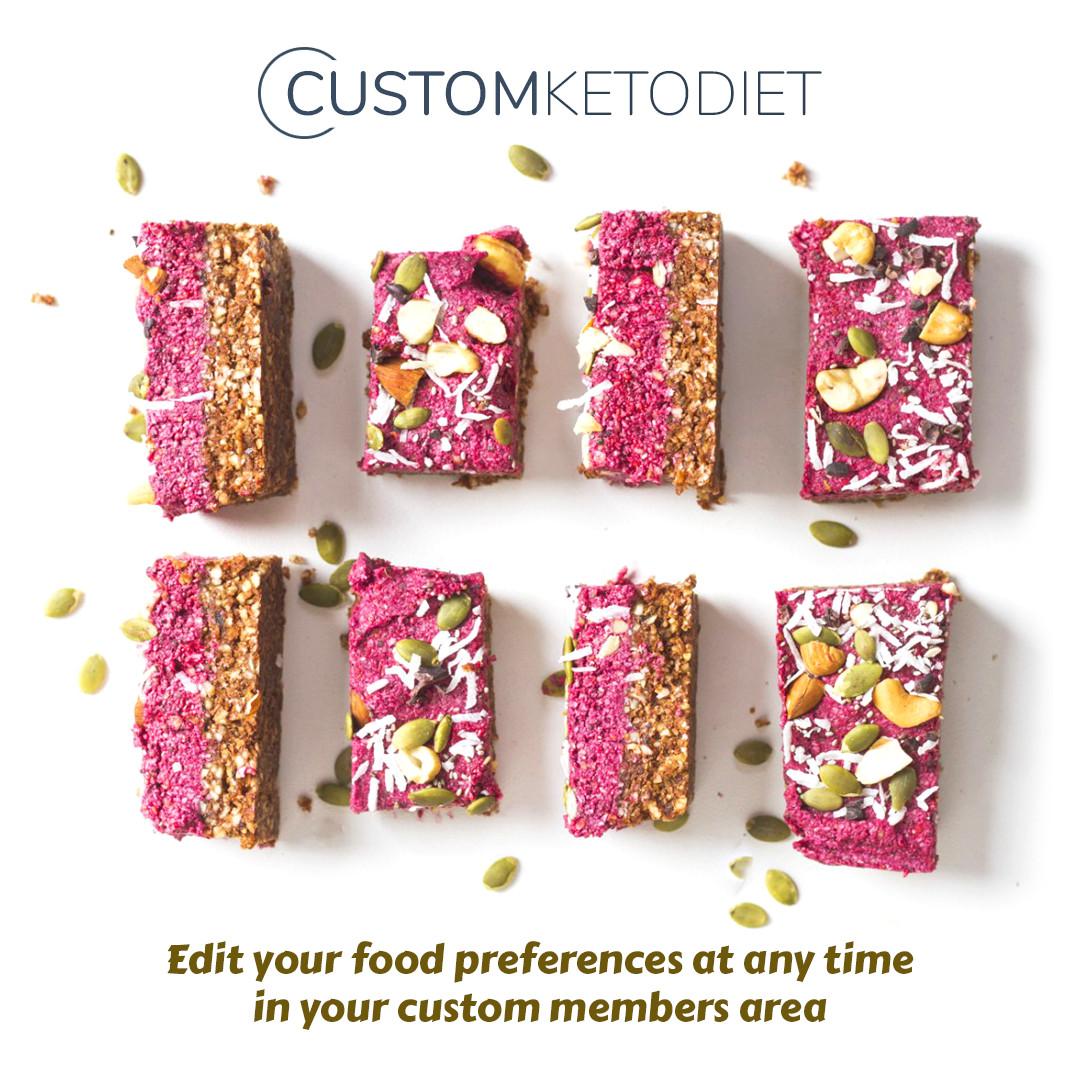List of foods to eat on the Mediterranean diet
The Mediterranean diet is not based on specific recipes or foods that you must consume at a specific period of the day. The main components of this eating pattern are olive oil and vegetables. Any food that is on the Mediterranean diet food list is easy to find and probably you are already consuming most of the foods.
You will just need to make some changes and start eating more vegetables, replace refined oil with olive oil, eat more fish and whole grains. Yes, you will also need to remove some of the foods like processed food, sugar, soda, etc.
Before we show you the complete Mediterannean diet food list if you don’t know what is and what are the benefits of following the Mediterranean diet you can find the answers here: What Is The Mediterranean Diet: How To Start, Benefits and Foods To Eat.
This post may contain affiliate links, which means we may receive a small commission, at no cost to you, if you make a purchase through a link. For more information, please see our disclosure.
A complete Mediterranean diet list of foods
Extra-virgin olive oil
Olive oil is the primary cooking fat in the Mediterranean diet. High monounsaturated fatty acids, and in particular oleic acid, are responsible for the benefits of consuming olive oil.
The most abundant antioxidants in olive oil are tocopherols, beta-carotene, lutein, squalene, lipophilic and hydrophilic phenols.
Traditional Mediterranean diets will use extra virgin olive oil in everything from marinating seafood and meats, salad dressings, roasting or saute vegetables, or adding to dips and spreads.
Olive oil has a low smoke point and begins to decompose at around 200 F (93 C), this is a relatively lower smoke point compared to other oils, so it’s best for medium and low-heat cooking.
Make sure that you have good quality extra virgin olive oil because almost all Mediterranean diet recipes start with olive oil. You’ll want to get extra-virgin olive oil.
Extra-virgin olive oil is produced by cold pressing and does not use chemicals for refinement. Another thing why this oil is recommended is that avoids high-heat manufacturing processes that can destroy the delicate fatty acids and nutrients in the oil.
When buying extra-virgin olive oil always look for bottles indicating that the oil is extra virgin and ideally cold-pressed or expeller-pressed.
Shop for olive oil that comes in a dark glass bottle that can protect the light from entering and damaging the vulnerable fatty acids. A dark bottle that is black or green protects the oil from oxidation and becomes rancid. Avoid oils that come in clear or plastic bottles.
Fresh fruits and vegetables
Fruits and vegetables take the major place on the Mediterranean diet food list. This is because no fruits or vegetables are off-limits on the diet menu. You can consume any fruit or vegetable seasonal and as local as possible.
Here are some typical vegetables used in the Mediterranean diet: Tomatoes, peppers, onions, eggplant, cucumbers, green beans, garlic, peas, zucchini, cauliflower, broccoli, carrots, celery leaves, beets, spinach, cabbage, romaine lettuce, frozen (spinach, green beans, peas).
Vegetables are often cooked in olive oil and consumed as a main course. It is good to have on hand some frozen vegetables when you can’t access fresh produce.
Green vegetables are a good source of vitamin A, vitamin C, fiber, antioxidants, magnesium, calcium, iron, and potassium. Green leafy vegetables are an important part of the diet and with so many varieties it is so easy to add them to your plate.
Always choose crispy leaves with a fresh green color. When the leaves are turning yellow to brown it means they are aging and losing their flavor.
Red, orange and yellow vegetables such as carrots, red and yellow peppers, tomatoes are a great addition to a leafy green salad. They are tasty on their own.
Red-orange and yellow bell peppers pair well with tomato-based pasta sauces such as marinara or bolognese. Tomatoes have a strong role in the Mediterranean diet. They can be eaten plain, in salads, sauces, etc.
Olives, especially Kalamata olives are among the most popular and are often tossed into Greek salads. Olives are a rich source of polyphenols and heart-healthy fats. Not just for salad, they are also added into portions of pasta or eaten as a simple snack.
Fruits used in the Mediterranean diet: grapes, lemons, oranges, grapefruit, apricots, apples, pears, pomegranate, cherries, avocado, watermelon, peaches, strawberries, figs, kiwi, dates, etc.
Whole grains
Whole grains are those that have not undergone much processing and retain their original seeds including the bran, germ, and endosperm. Grains can be rolled, crushed, or cracked.
As long as the 3 parts (bran, germ, and endosperm) are present in the original proportion they’re considered whole grains. Refined grains have had the bran and germ removed, leaving only the endosperm.
You can find whole-grain versions of bread, rice, cereal, pasta, and flour at most grocery stores. Many whole-grain foods, including a variety of loaves of bread, pasta, and cereals are ready to eat.
Common varieties of whole grains that you can include in your Mediterranean diet food list are buckwheat, bulgur (cracked wheat), whole oats, brown rice, barley, quinoa, whole grain pasta and bread, corn, polenta, etc.
Seafood
Fish and shellfish are the major sources of protein and healthy fats in the Mediterranean diet. You can consume any type of fish at least twice a week.
Omega-3 rich fish like salmon, tuna, or sardines you can consume fresh or canned. Mussels, shrimps, and clams are often featured in pasta and grain dishes, or simply served with olive oil, lemon, and herbs.
No matter what you choose most Mediterranean eating patterns encourage seafood consumption twice a week.
Fish and seafood to consume at least twice a week: Tuna, salmon, sardines, cod, shrimp, oysters, crab, clams, mussels, etc.
Beans and legumes
Beans, peas, lentils, chickpeas, etc. are an important and affordable source of protein and dietary fiber in the Mediterranean diet. They can be just as filling as meat-based foods, and they are consumed nearly daily!
One of the most used pulses in the Mediterranean dishes is the chickpea, which is formed in falafel, tossed into salads, or whipped into hummus. Lentils are also used in stews and soups.
Black-eyed peas, kidney beans, and cannellini are often tossed into salads, with a fresh squeeze of lemon and olive oil.
Legumes: Beans, lentils, peas, chickpeas, etc.
Nuts and seeds
Nuts and seeds are other important sources of protein, healthy fats, and fiber. Nuts are eaten daily or nearly daily simply as snacks or incorporated into dips or pestos, folded into pasta meals, sprinkled on salads and vegetable dishes.
A common popular item on the Mediterranean diet food list is tahini, which is a paste made from ground sesame seeds. It is served by itself or as a major ingredient in hummus and halva. It is also used in sauces or dressings to spoon over roasted veggies or grain bowls.
Nuts and seeds on the Mediterranean diet: Walnuts, almonds, chestnuts, hazelnuts, cashews, pistachios, sunflower seeds, sesame seeds, pumpkin seeds, etc.
Fresh herbs and spices
Many different aromatic herbs and spices are used in Mediterranean cooking. These seasoning agents reduce the need to add excess salt and also they provide health-promoting antioxidants.
Antioxidant-rich herbs and spices like mint, oregano, cinnamon, and rosemary are common inclusions that make meals a lot more flavorful.
Herbs and spices: Basil, mint, rosemary, oregano, parsley, pepper, cinnamon, thyme, sage, bay leaf, cumin, saffron, paprika, red pepper flakes, etc.
Foods that are allowed in moderation
These foods that we are going to mention are also part of the Mediterranean diet food list but they are allowed in moderation.
High-quality dairy
In moderation high-quality goat milk, probiotic-rich kefir, yogurt, and healthy cheese are allowed for consumption on the Mediterranean diet.
The Mediterranean region uses traditionally cultured cheeses (made from milk and natural cultures), as opposed to some of the processed varieties commonly available in the U.S.
In the traditional Mediterranean diet, the dairy products are full-fat: Greek yogurt, feta cheese, fresh cheese such as ricotta, parmesan, fresh mozzarella, graviera, etc.
Meat and poultry
Red meat is consumed in small amounts and usually on special occasions. Options include grass-fed lean cuts of red meat like lamb and beef.
High-fat meat like bacon and sausage should be avoided. Chicken, duck, and turkey are also allowed in moderation once a week.
Red wine
Red wine is a type of alcohol commonly consumed in moderation ( a 5-ounce pour is a standard ) on the Mediterranean diet. Red wine contains antioxidant polyphenols and flavonoid resveratrol which may help decrease LDL cholesterol and increase HDL cholesterol levels.
A glass of red wine is usually consumed with a meal and it’s certainly not a must or a reason to start drinking if you currently refrain from alcohol.
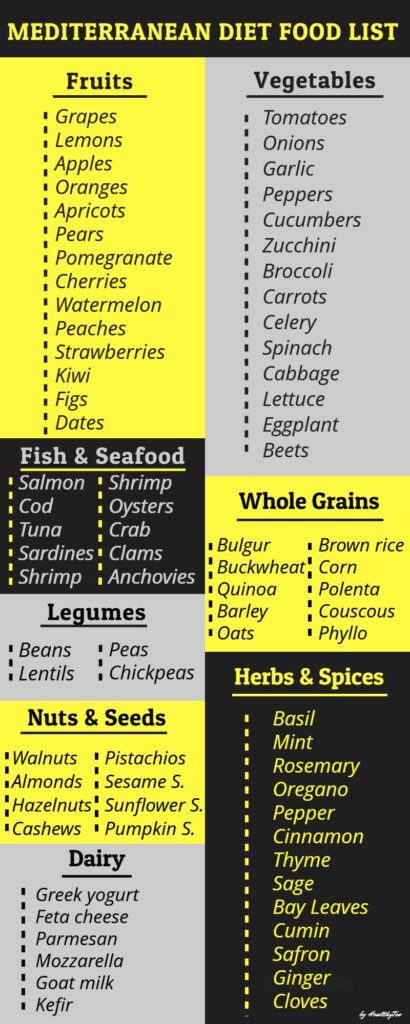
Foods that are not allowed on the Mediterranean diet
Here is a list of foods that you should generally limit while eating Mediterranean-style meals. Foods that are not allowed on the Mediterranean diet are:
Heavily processed foods
Try to stay away from cured and processed meats like bacon, salami, sausage, hot dogs. When we talk about limiting processed foods, this means avoiding things like frozen meals with tons of sodium.
Refined grains
With this eating style, you will also want to stay away from refined grains like white flour, white bread, and white pasta.
Butter
This is another food that should be limited if you start with the Mediterranean diet. Try replacing butter with olive oil when possible.
Added sugar
Soda, candies, table sugar, ice cream, sugar, and syrup-sweetened drinks like artificial juices should be avoided.
Refined oils
The oil that has been refined has been altered by using chemicals that are harmful to us. Refined oils you should avoid:
- Canola oil
- Soybean oil
- Sunflower oil
- Corn oils
- Margarine
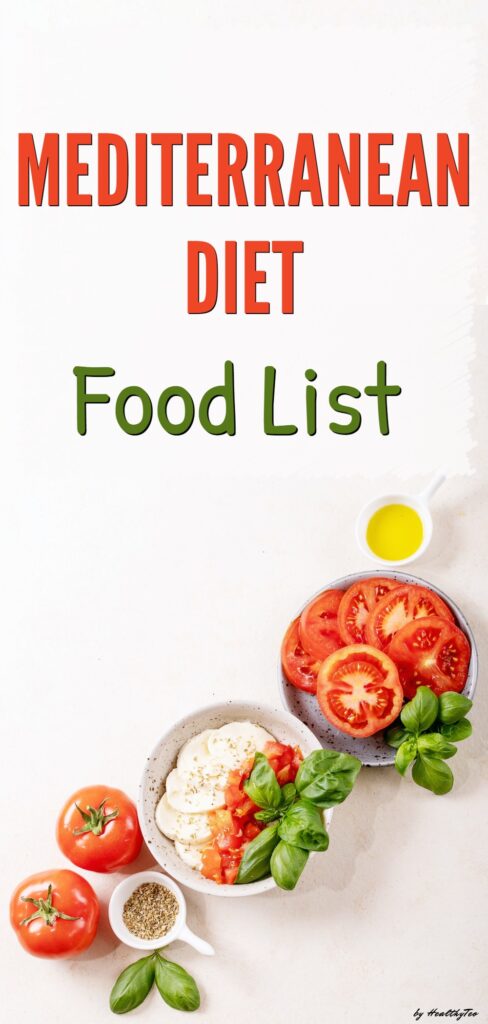
Mediterranean diet food list final thoughts
The Mediterranean diet includes mostly plant-based foods that you can find in any local food store and all these foods from the Mediterranean diet food list are available for you all year.
Try eating more seasonal foods and follow the rules of replacing refined oils with olive oil. Olive oil is the base of the Mediterranean diet.
As we mentioned always choose extra-virgin olive oil. Incorporate more fish and seafood in your meals at least twice a week. Try to eat less red meat.
You can consume it once a week or on special occasions. Drink more water and tea. Avoid sugary beverages and processed foods. You can drink a glass of red wine with a meal.
As you can see it is not so hard to start with the Mediterranean diet. You just need to make little changes in your recipes. This is one of the healthiest diets, sustainable, and easy to follow.
Remember this is not just a diet it is a way of living that includes more physical activity and social interactions!
Related articles
What Is The Mediterranean Diet: How To Start, Benefits and Foods To Eat

